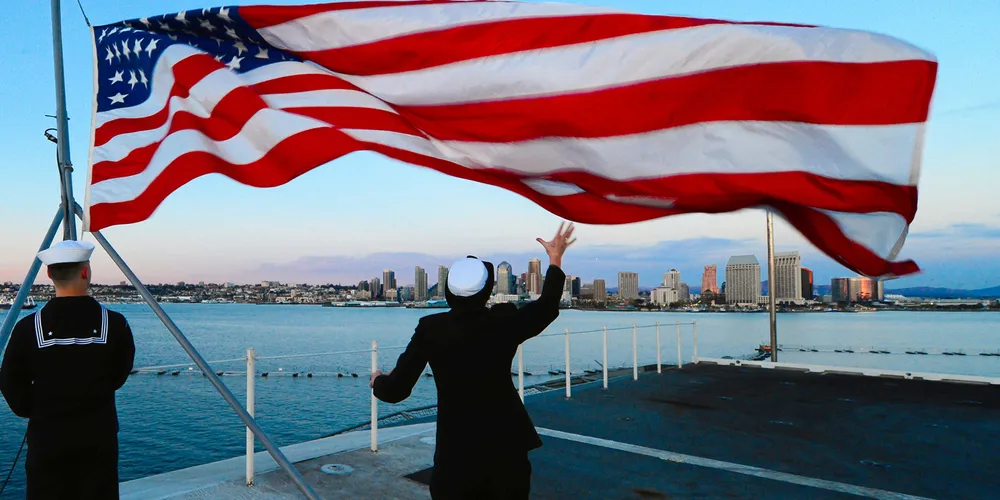US offshore wind may face tough competition for plate and other steel products from Navy
Supply of metal critical for accelerating industry growth this decade and beyond looms as a major bottleneck with military demand also expected to surge

The US offshore wind sector may face a surprising competitor for steel in the Navy as it ramps to reach the Biden administration’s 30GW by 2030 goal, said industry leaders on Thursday at a conference in Baltimore.
If Congress provides funding, the Department of Defence (DoD) wants to purchase between 282-340 new “battle force ships” such as aircraft carriers, destroyers, and submarines by 2050. This would entail cost at least $30bn annually according to an analysis by the Congressional Budget Office and consume millions of tonnes of high-quality plate steel from domestic mills over its 25-year duration.
“I think this is something that we need to appreciate when we come up with a national strategy to support USA offshore wind,” Byron Cooper, CEO of North Shore Steel in Houston, which supplies the emerging sector, told the International Partnering Forum sponsored by the Business Network for Offshore Wind.
Reaching the US’ 2030 capacity goal will require some 7 million tonnes of thick, high quality plate steel that currently can only be produced by a single mill – Nucor’s $1.9bn state-of-the-art facility at Brandenburg, Kentucky.
The shortage of steel is not just a US problem. S&P Global Platts forecasts that global wind industry steel consumption will double by 2030 to reach 144 million tonnes on an anticipated 960GW buildout.
The Brandenburg facility, which will be among the few mills worldwide capable of manufacturing at scale the heavy gauge plate used in wind tower monopile foundations, is still being commissioned.
“Within this year we will be qualified and certified to supply the very unique, demanding, very thick and heavy plate needed,” said Frank Fisher, director of energy solutions, at Nucor.
The requirement increases to 27.5% for plant that starts construction in 2025, 35% in 2026, 45% in 2027, and 55% in 2028 or later. The industry is waiting for guidance from the Department of Treasury on application criteria for the credit.
The US steel sector will need to ramp production and capabilities regardless amid surging global offshore wind demand, according to officials.
“We have limited capacities globally,” said Tim Mack, foundation and localisation manager for US Wind’s Sparrow Point Steel monopile manufacturer.
Surging demand from the Navy and offshore wind sector is “highly likely” to spur capacity investments in the American steel sector, said Cooper, adding that recent profitability has enabled an ongoing transformation in the industry over the last five or six years.
“There are new mills with new capabilities and new size ranges, new specifications coming online all the time.” he said.
This investment might face its own upstream bottlenecks, however, with equipment to manufacture the specialised steel itself in short supply.
US manufacturers are unable to produce flanges needed for monopiles and with equipment bottlenecks, developing this manufacturing capability will take “a minimum of two years,” said Cooper. “That’s a global constraint.”
Overcoming these bottlenecks will result in higher priced steel components. US Wind’s Mack said the offshore wind sector is going to have to accept the reality that “we're not going to have a European price model. We're going to have a US price monopile.”
(Copyright)